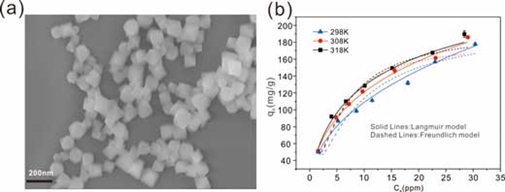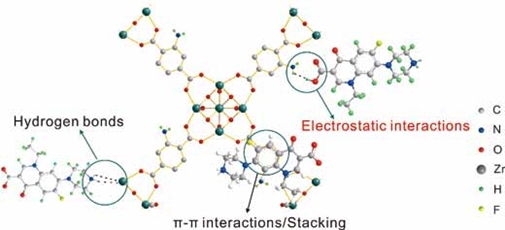|
NOVIDADES
Antibiotics has been widely used as a veterinary medicine and as medication for humans. However, it also has been an emerging pollutant in water. for its environmental residues increase the resistance of bacteria. What's worse, resistance genes continuing to expand and evolve in the environment could even create "super bacteria". Given this, a study team led by Prof. KONG Lingtao from Institute of Intelligent Machines under Hefei Institutes of Physical Science has synthesized the metal-organic framework (MOF) nanomaterials successfully to remove antibiotics from water (Applied Surface Science, "High-efficiency adsorption of norfloxacin using octahedral UIO-66-NH2 nanomaterials: Dynamics, thermodynamics, and mechanisms").  (a) SEM images of and UiO-66-NH2; (b) Adsorption isotherms at different temperatures of NOR adsorption on UiO-66-NH2. Image: ZHANG Kaisheng
 Image: ZHANG Kaisheng
Finally, several credible adsorption mechanisms were proposed. Chinese Academy of Sciences. Posted: May 13, 2020.
|
|||||||||||||||||||||||||